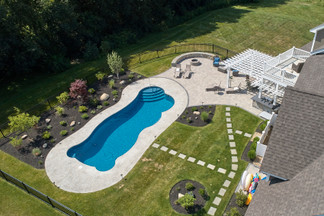Di chlor should be added in the evening and swimming can be resumed once the chlorine has returned to normal levels.
Di chlor for vinyl pool liner.
The di chlor shock we sell is 99 sodium dichlor which means 54 8 free chlorine.
Di chlor also contains cyanuric acid cya which acts like sunscreen for your chlorine.
Di chlor has 55 free and available chlorine to fight algae in your pool.
Sodium di chlor will usually raise the ph level when added to the swimming pool.
To use this type of shock especially in vinyl liner pools to prevent bleaching of the liner you must.
Fill a bucket about 1 2 full of water add shock do not stir let sit for a few minutes pour only the liquid into the pool.
Every liner or pool installation i did i wrote on the service ticket in huge underlined letters use di chlor chlorine and do not use cal hypo.
Di chlor is fast dissolving it will not sit on the vinyl and eat away at it.
Burst pool shock is dichlor chlorine that is a unique quick dissolving formula that does not require pre mixing and will not cloud pool water bleach pool vinyl liners or harm pool and spa surfaces.
Some pool owners will even put it directly in their pool or through the skimmer for the same reason.
Note that chlorine forms into acid when reacting with water so the net effect is still a slight drop in ph.
It s roughly ph neutral so it will have minimal impact on your pools ph level and staining your pool isn t a concern.
If your cya is already high then di chlor is probably not the best option for you.
Chlor burst swimming pool shock is also ph neutral so it will not affect ph levels cutting down on the expense of balancing chemicals.
There are many different types of pool shocks available for shocking the pool liquid chlorine calcium hypochlorite stabilized sodium di chlor and also a non chlorine oxidizer called potassium monopersulfate.
It can be used as a shock treatment 1 lb per 10 000 gallons or as a maintenance chlorine 3 oz.

